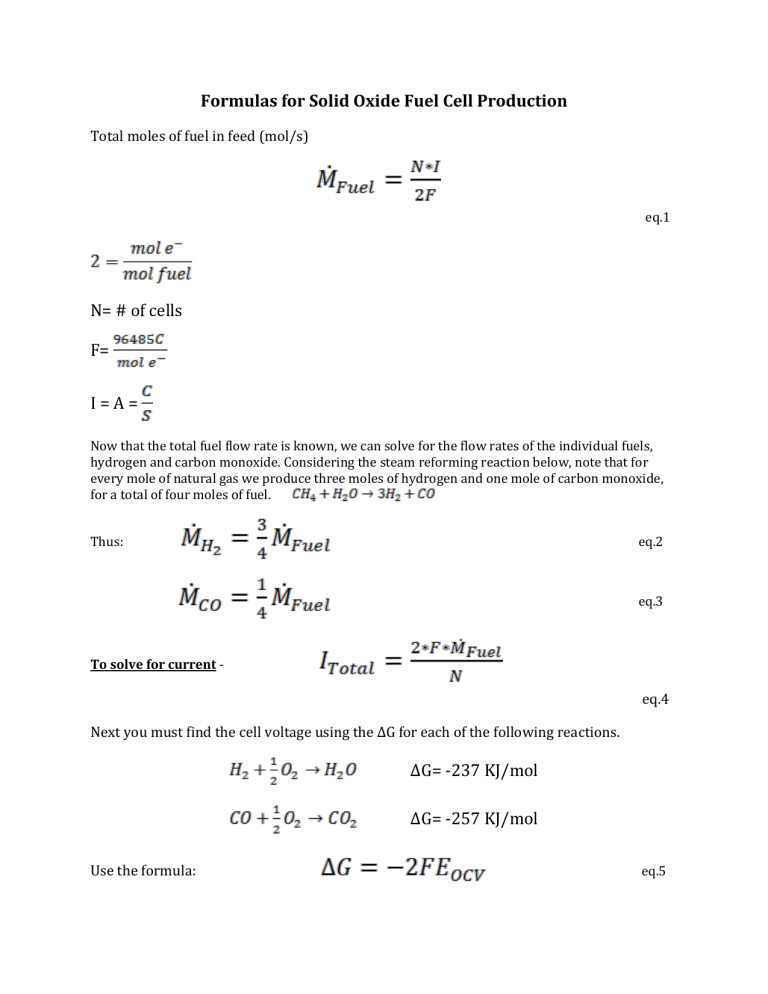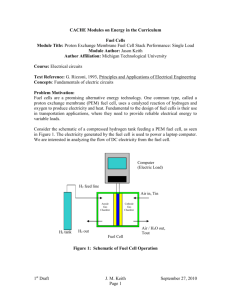Formula Summary Sheet

Formulas for Solid Oxide Fuel Cell Production
Total moles of fuel in feed (mol/s)
eq.1
N= # of cells
F=
I = A =
Now that the total fuel flow rate is known, we can solve for the flow rates of the individual fuels, hydrogen and carbon monoxide. Considering the steam reforming reaction below, note that for every mole of natural gas we produce three moles of hydrogen and one mole of carbon monoxide, for a total of four moles of fuel.
Thus: eq.2
eq.3
To solve for current -
Next you must find the cell voltage using the ΔG for each of the following reactions.
eq.4
ΔG= -237 KJ/mol
Use the formula:
ΔG= -257 KJ/mol
eq.5
Where F is Faraday’s constant and E
OCV
is the open circuit voltage, which is the voltage of one cell in the fuel cell at zero current.
Using the ΔG values you can calculate two different open circuit cell voltage values, one for
H and one for CO - &
You must now find the weighted average open circuit cell voltage among these two values by putting them into the following equation: eq.6
With this given cell voltage you must take into account the efficiency h of the entire system.
Therefore the new cell voltage is: eq.7
Given you already know the number of cells in the stack you can find the total voltage of the system: eq.8
Now that you know the total voltage and the total current you can calculate the total power. eq.9
Knowing the total count of the cells will not tell you how large they need to be. In order to find this you must first find the current density with a target value of about 500 mA/cm 2 .
The current-voltage polarization relationship is given by the equation eq.10
Where is the current density in mA/cm 2 . This data was obtained from a linear fit of data for an electrolyte-supported solid oxide fuel cell reported by Chan et al. (J. Power Sources, vol 93, pp. 130-
140, 2001).
Rearrange this equation to solve for the current density.
eq.11
Using the current density you can calculate the surface area of each fuel cell and the dimensions of a square cell. eq.12 eq.13
To solve for the overall heat Q
Heat
, you must calculate the heat of each reaction using the following two enthalpies.
(J/mole)
(J/mole)
The individual calculations for the Q
Heat
for each reaction are as follows:
H
W
: (J/s)
CO
W
: (J/s)
Add these two values to get a combined value for the work being done. Then subtract the work from the total power to get a Q
Heat total. eq.14











